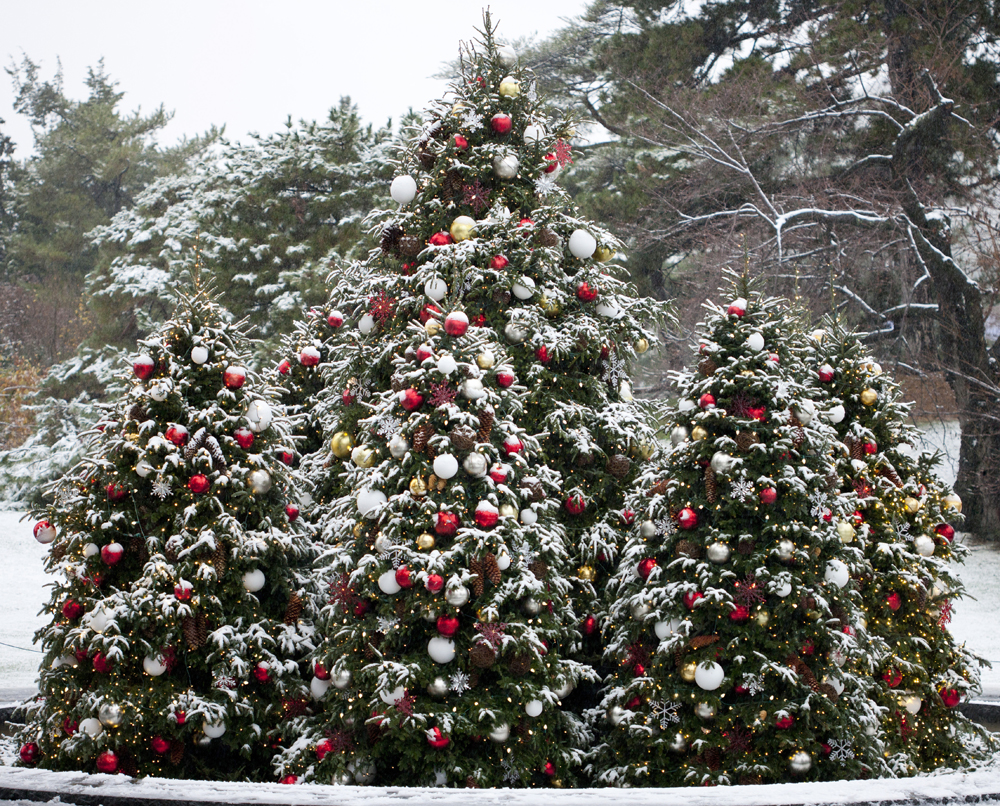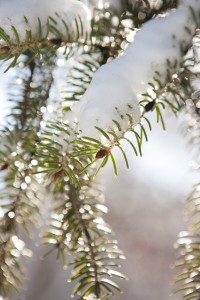Holiday Tips for Getting Out of Sticky Situations
Posted in Horticulture on December 23 2014, by Sonia Uyterhoeven
Sonia Uyterhoeven is NYBG‘s Gardener for Public Education.

With the holidays upon us, I figured I should share some tips for getting out of sticky situations. No, I don’t mean finding the words you need to mask your disappointment when you unwrap yet another holiday-themed tie, or filling those pregnant silences that come after receiving a gift that’s just a little too practical.
The sticky mess I refer to is sap. Just looking at a conifer is enough to make my hands feel sticky. The holidays are a perfect time for buying or making your own holiday wreaths or evergreen table decorations, and I usually journey down to the floral district on 28th street—between 6th and 7th—to pick up my supplies. But the tree vendors that set up on street corners seem to have an ever-expanding selection of greens.
Pine, in my opinion, is the worst offender when it comes to sap, though other species aren’t far off. A few weeks ago I wrote a piece on Christmas trees, the most common being the balsam fir (Abies balsamea). This tree has smooth, grayish-brown bark that is raised with blisters that contain a clear, sticky resin or pitch. During the life of the tree, the resin plays an important role in protecting the tree. It traps insects that pierce the bark to feed, draining the tree of its energy. This resin also helps to protect open wounds by closing them up.
 The Native Americans and arriving settlers used the pitch from balsam firs in a salve for healing sores and cuts. They also used it to prevent chapped lips. It’s believed that the antiseptic properties that protect the tree from infections have a similar healing effect on humans. But my best advice for sap—whether from balsam fir, pine, or spruce—is to remove it as soon as possible, before you start sticking to everything you touch. There are many household tricks to getting it off, though some—like rubbing mayonnaise all over your hands—are worse than others.
The Native Americans and arriving settlers used the pitch from balsam firs in a salve for healing sores and cuts. They also used it to prevent chapped lips. It’s believed that the antiseptic properties that protect the tree from infections have a similar healing effect on humans. But my best advice for sap—whether from balsam fir, pine, or spruce—is to remove it as soon as possible, before you start sticking to everything you touch. There are many household tricks to getting it off, though some—like rubbing mayonnaise all over your hands—are worse than others.
Some practical tricks for getting the sap off include using rubbing alcohol or witch-hazel. My personal favorite antidote is Tecnu®, the skin cleanser that removes the oil from poison ivy that causes that painful itching. For getting sap off of tools, WD-40® is always a dependable option. And if you’re in a pinch, hand sanitizers will sometimes work. Soapy water, however, does not—you need something with either oil or alcohol in it. Regardless of which “cure” you choose, most people have at least one of the items listed above lying around the house.

